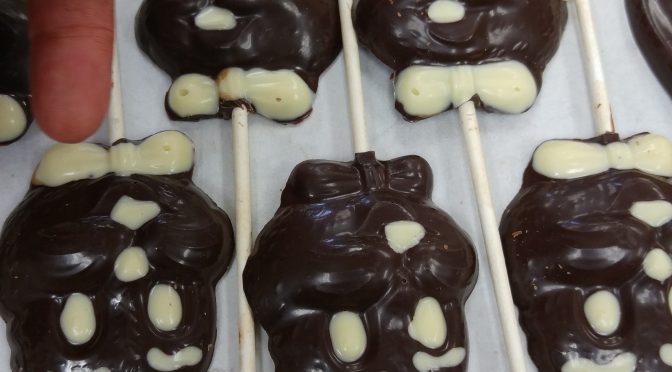

began producing novelty candles for Socony-Vacuum Oil Co. Wax horse teeth (said to taste like wintergreen), and other novelties chattered profitably down Glenn's production line while Franklin Gurley explored further expansion opportunities for his rapidly growing company. Just a few blocks away, Glenn Confections was busily engaged in producing their popular paraffin novelties, and continued to do so after becoming the wax candy division of W&F Manufacturing Co. He purchased Robert White's new confectionary company, W&F Manufacturing Co., which had incorporated only the year before to produce, ".all kinds of candies, chocolates, ice cream dainties and parafine (sic) novelties." Gurley reported his occupation as "confectioner" by the 1930 census. left his position at Buffalo's National Aniline & Chemical Co. employed almost 100 people, including 18 salesmen traveling nationwide from offices located at 65 Carroll St. His products' popularity grew quickly and by 1923, J.W. There he introduced America to paraffin "penny chewing gum novelties," delighting children everywhere. When the elder Glenn passed away in 1912, son John continued the business as J.W. Glenn had come to the United States from England at age 15 in 1888 and grew up in his father's wholesale candy business. Then an inspired Buffalo, NY confectioner used fully refined, food-grade paraffin and a sense of humor to find a niche in America's imagination. Edison's popular new phonographs needed paraffin for their wax cylinders. "Crayola" crayons were introduced by Binney & Smith in 1903 and were instantly successful. The new century brought other new and surprising uses as well. By 1900, tallow candles were history as ninety percent of all candles were made from paraffin. Kerosene sales devastated the candle business, much like widespread use of electricity would impact the kerosene market at the turn of the century.Ī byproduct of kerosene distillation, paraffin, soon found its way from refinery to marketplace in the form of sealing waxes and even chewing gums. "This flood of American petroleum poured in upon us by millions of gallons, and giving light at a fifth of the cost of the cheapest candle," wrote British chandler James Wilson in 1879. The 1859 birth of the oil industry and introduction of kerosene for illumination changed America. The answer, oddly enough, can be found by way of the oil patch. Most of us remember the peculiar disintegrating flavor of Wax Lips from bygone Halloweens and birthday parties but we don’t know where these long-enduring icons of American culture actually started.

It is hard to recall a time when there were no wax fangs, lips, moustaches, or harmonicas for kids to smuggle into school. But there is far more to these paraffin playthings than a penny's worth of fun.
#What happened to chocolate bunny pop movie#
Shields in the perennial holiday movie favorite, A Christmas Story, legions of grownups are reminded of what a penny used to buy at their local Woolworth's store. When Ralphie Parker’s 4th Grade class dejectedly hand over their wax fangs to Mrs.


 0 kommentar(er)
0 kommentar(er)
